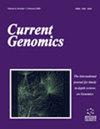An Assessment of the Degradation Potential and Genomic Insights Towards Hydroxylated Biphenyls by Rhodococcus opacus Strain KT112-7
IF 1.4
4区 生物学
Q4 BIOCHEMISTRY & MOLECULAR BIOLOGY
引用次数: 0
Abstract
Background: Hydroxylated biphenyls are currently recognized as secondary pollutants that are hazardous to animals and humans. Bacterial degradation is the most effective method for the degradation of hydroxylated biphenyls. Several strains capable of degrading polychlorinated biphenyls have been described, which also degrade hydroxylated biphenyls. Objectives: 1) To study the biodegradative properties of the Rhodococcus opacus strain KT112-7 towards mono-hydroxylated biphenyls. 2) To analyze the genome of the Rhodococcus opacus strain KT112-7. 3) To identify the genetic basis for the unique biodegradative potential of the Rhodococcus opacus strain KT112-7. Methods: A genome analysis of the strain KT112-7 was conducted based on whole-genome sequencing using various programs and databases (Velvet, CONTIGuator, RAST, KEGG) for annotation and identification of protein-coding sequences. The strain KT112-7 was cultivated in a K1 mineral medium supplemented with mono-hydroxy biphenyls or mono-hydroxybenzoic acids as the carbon source. For the growth test mono-hydroxybiphenyls or mono-hydroxybenzoic acids were dosed at concentrations of 0.5 g/L and 1.0 g/L correspondently, and the bacterial growth was monitored by the optical density. For the biodegradative activity test, mono-hydroxybiphenyls were dosed at a concentration of 0.1 g/L in vials, inoculated with late exponential phase bacteria previously acclimated on biphenyl. Compound analysis was performed using GC-MS, HPLC, and spectrophotometry. Results: It was found that the genome of strain KT112-7 consists of a chromosome and 2 plasmids. Biphenyl degradation genes (bph genes) were identified on plasmid PRHWK1 and the chromosome, as well as hydroxybenzoic acid degradation genes on the chromosome. The strain KT112-7 was shown to degrade mono-hydroxylated biphenyls to basal metabolic compounds of the cell, with the highest destructive activity observed towards 3- and 4-hydroxylated biphenyls (98%). Conclusion: The Rhodococcus opacus strain KT112-7 is characterized by genetic systems that contribute to its high biodegradative potential towards mono-hydroxylated biphenyls and their metabolites. Thus, the strain KT112-7 is promising for use in hydroxybiphenyl degradation technologies.评估乳清红球菌 KT112-7 株对羟基联苯的降解潜力和基因组见解
背景:羟基联苯是目前公认的对动物和人类有害的二次污染物。细菌降解是降解羟基联苯的最有效方法。已经描述了几种能够降解多氯联苯的菌株,它们也能降解羟基化联苯。目标1) 研究 Rhodococcus opacus 菌株 KT112-7 对单羟基联苯的生物降解特性。2) 分析乳白念珠菌菌株 KT112-7 的基因组。3) 确定乳白葡萄球菌菌株 KT112-7 具有独特生物降解潜力的遗传基础。研究方法利用各种程序和数据库(Velvet、CONTIGuator、RAST、KEGG)对菌株 KT112-7 进行全基因组测序,并对蛋白质编码序列进行注释和鉴定。菌株 KT112-7 在以单羟基联苯或单羟基苯甲酸为碳源的 K1 矿物培养基中培养。在生长试验中,单羟基联苯或单羟基苯甲酸的浓度分别为 0.5 克/升和 1.0 克/升,细菌生长情况通过光密度进行监测。在生物降解活性测试中,将浓度为 0.1 克/升的单羟基联苯装入小瓶中,并接种先前已适应联苯的晚期指数期细菌。采用气相色谱-质谱法、高效液相色谱法和分光光度法进行化合物分析。结果发现菌株 KT112-7 的基因组由一个染色体和两个质粒组成。在质粒 PRHWK1 和染色体上发现了联苯降解基因(bph 基因),在染色体上也发现了羟基苯甲酸降解基因。研究表明,菌株 KT112-7 能将单羟基联苯降解为细胞的基础代谢化合物,对 3 和 4-羟基联苯的破坏活性最高(98%)。结论Rhodococcus opacus 菌株 KT112-7 的遗传系统有助于提高其对单羟基联苯及其代谢物的生物降解潜力。因此,KT112-7 菌株有望用于羟基联苯降解技术。
本文章由计算机程序翻译,如有差异,请以英文原文为准。
求助全文
约1分钟内获得全文
求助全文
来源期刊

Current Genomics
生物-生化与分子生物学
CiteScore
5.20
自引率
0.00%
发文量
29
审稿时长
>0 weeks
期刊介绍:
Current Genomics is a peer-reviewed journal that provides essential reading about the latest and most important developments in genome science and related fields of research. Systems biology, systems modeling, machine learning, network inference, bioinformatics, computational biology, epigenetics, single cell genomics, extracellular vesicles, quantitative biology, and synthetic biology for the study of evolution, development, maintenance, aging and that of human health, human diseases, clinical genomics and precision medicine are topics of particular interest. The journal covers plant genomics. The journal will not consider articles dealing with breeding and livestock.
Current Genomics publishes three types of articles including:
i) Research papers from internationally-recognized experts reporting on new and original data generated at the genome scale level. Position papers dealing with new or challenging methodological approaches, whether experimental or mathematical, are greatly welcome in this section.
ii) Authoritative and comprehensive full-length or mini reviews from widely recognized experts, covering the latest developments in genome science and related fields of research such as systems biology, statistics and machine learning, quantitative biology, and precision medicine. Proposals for mini-hot topics (2-3 review papers) and full hot topics (6-8 review papers) guest edited by internationally-recognized experts are welcome in this section. Hot topic proposals should not contain original data and they should contain articles originating from at least 2 different countries.
iii) Opinion papers from internationally recognized experts addressing contemporary questions and issues in the field of genome science and systems biology and basic and clinical research practices.
 求助内容:
求助内容: 应助结果提醒方式:
应助结果提醒方式:


